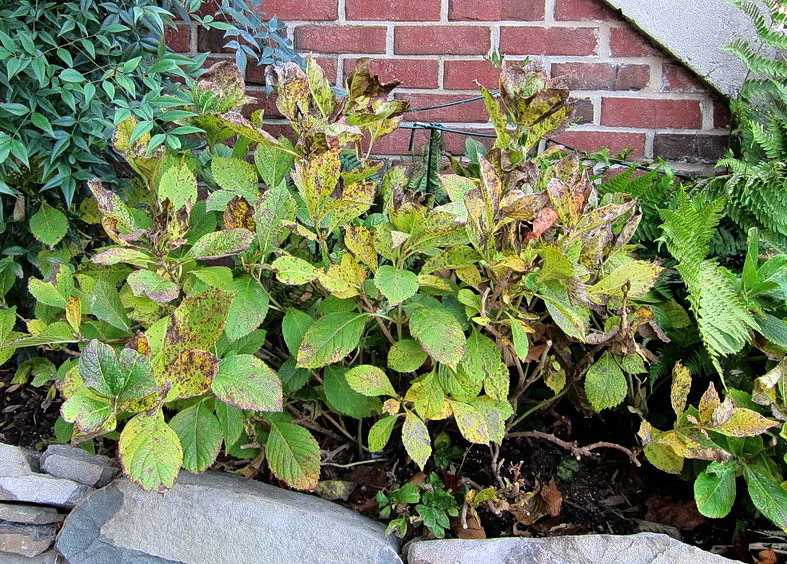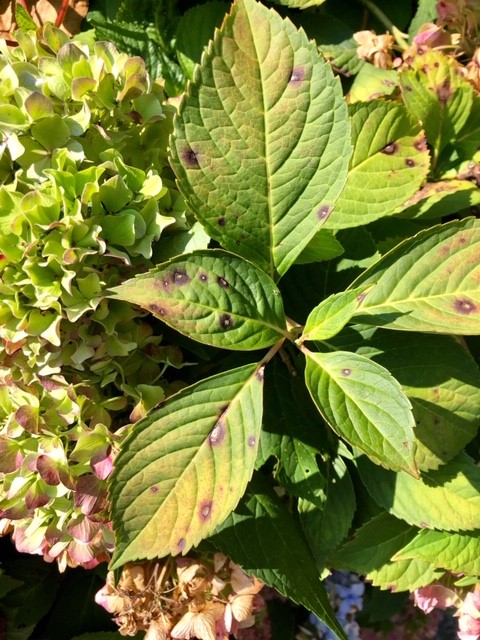Not known Details About Hydrangea Leaves Turning Yellow
Table of ContentsSome Known Facts About Hydrangea Leaves Turning Yellow.Some Of Hydrangea Leaves Turning YellowThe Best Guide To Hydrangea Leaves Turning YellowExamine This Report on Hydrangea Leaves Turning YellowHow Hydrangea Leaves Turning Yellow can Save You Time, Stress, and Money.Get This Report on Hydrangea Leaves Turning Yellow
The container should be big sufficient so the plant can grow and get every one of the water and nutrients it requires. Place the container on a deck, or in an unethical place on a patio. You can additionally replace the plant with a panicle hydrangea. Panicles like the complete sun.No matter of the variety, strategy in advance and make certain your plant has plenty of security from the wind. You might transplant to a new location, or you could create a wind barrier utilizing one more plant, or fence.
Ornamental grass, Rose of Sharon, or Holly bushes are just a couple of ideas of plants you could use to block the wind. If you need to hair transplant, locate a spot in your garden that is well secured from sunlight and wind. Transplanting is ideal performed in the fall or the spring.
Some Of Hydrangea Leaves Turning Yellow
All of the above circumstances could occur to any garden enthusiast. Thankfully for all of us, hydrangeas are really durable, and will certainly probably recoup extremely promptly with a little love and care. The plants area is one of the most essential variable when it pertains to obtaining recognized and correct growth. With a little forethought on planting location and appropriate upkeep, you'll have the ability to guarantee your hydrangeas!.
If Hydrangea leaves turn yellow and falls off later on, it's usually due to overwatering, as the plant can not uptake water and loses the fallen leaves to reduce off transpiration. Following this, Hydrangea leaves start to sag and wilt. Considering that both conditions can establish yellow fallen leaves, you should find the distinction in between the overwatered and underwatered plant.
You can rescue the plant from yellow fallen leaves by using it the proper light and positioning. If your plant gets yellow fallen leaves, relocate it to a dark place.
Facts About Hydrangea Leaves Turning Yellow Revealed
, and temperature level changes can trigger yellowing leaves and brown spots. If it gets also warm, the edges of the leaves end up being yellow, turn brownish and create a crispy structure.
Heavy soil can quickly obstruct the oxygen supply to the origins and cut the link with the upper parts of the plant (leaves). Hydrangea leaves transform their color if they find small aggravations in the dirt composition. This concern can cause the Hydrangea delegates transform yellow, deal with leaf declines, and render a sagging plant in sync with overwatering.
Yet, yellow fallen leaves in Hydrangeas are the first signs of condition invasion, often complied with by black spots, browning, drops, and wilting. Separate the infected or pest-infested plant from the healthy and balanced plants to avoid illness spread. If it is a garden plant, remove all the infected fallen leaves making use of sanitized devices and cleanse up all the particles.
Examine This Report on Hydrangea Leaves Turning Yellow

Avoid cutting healthy and balanced or green leaves, and do not get rid of more than 25% of the plant's foliage. Accumulate the disposed of entrusts to shed or compost them. The major reason behind the red fallen leaves in Hydrangea is bad dirt or environmental conditions. Hydrangea Leaves Turning Yellow. If Hydrangea fallen leaves have a white fine-grained substance on them, it suggests Powdery Mildew infection.
Repot the plant annually in spring or every 2 years if the growth rate is slow.
Rumored Buzz on Hydrangea Leaves Turning Yellow

Each reason impacts the plant in a manner that can be dealt with if we understand how to care for hydrangeas the ideal means. When we speak about insufficient light for hydrangeas, we imply that the plant isn't getting adequate sunshine. Hydrangeas prefer bright light, yet not straight, scorching sun. They commonly thrive ideal with early morning sun and afternoon color.
Without adequate sunshine, the leaves can transform yellow, the plant can come to be weak, and it might generate less flowers. To make certain a hydrangea receives ample light, it should be placed in an area where it can enjoy the early morning light and be safeguarded from the intense afternoon sun. Overwatering is when a hydrangea plant obtains even more water than it requires.
The 6-Minute Rule for Hydrangea Leaves Turning Yellow

Without adequate air, the origins can not do their task well, and the plant begins to suffer. Yellow fallen leaves may be an indicator that the plant is getting excessive water. On the other hand, dehydration takes place when find the plant doesn't obtain enough water. Like individuals, plants require water to remain healthy.
This trouble prevails in the fall as the weather condition changes or if a hydrangea is grown in an area where it doesn't get adequate warmth from the sunlight. It is very important to understand the ideal problems for hydrangeas to prevent low-temperature stress and anxiety. Most hydrangeas grow best in zones 6 to 9, where the environment is milder.
It's important to understand that this kind of yellowing is various from the yellowing triggered by issues like excessive water or otherwise enough light. Consequently, if the yellow leaves are mostly at the end of the plant et cetera of the plant looks healthy, it can simply imply that the fallen leaves are just getting old.